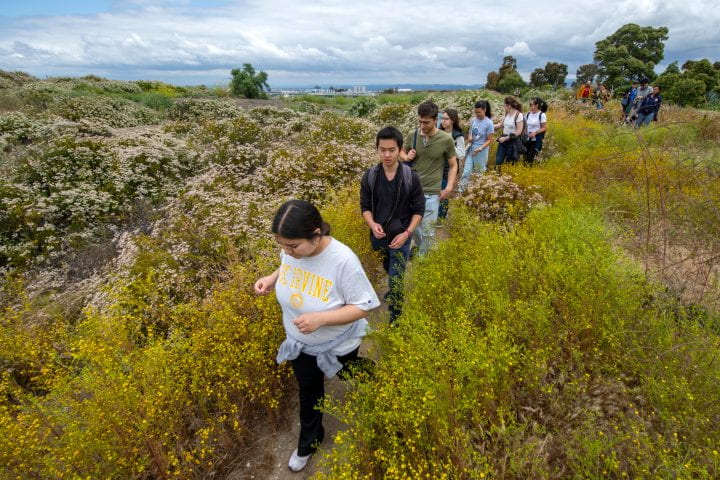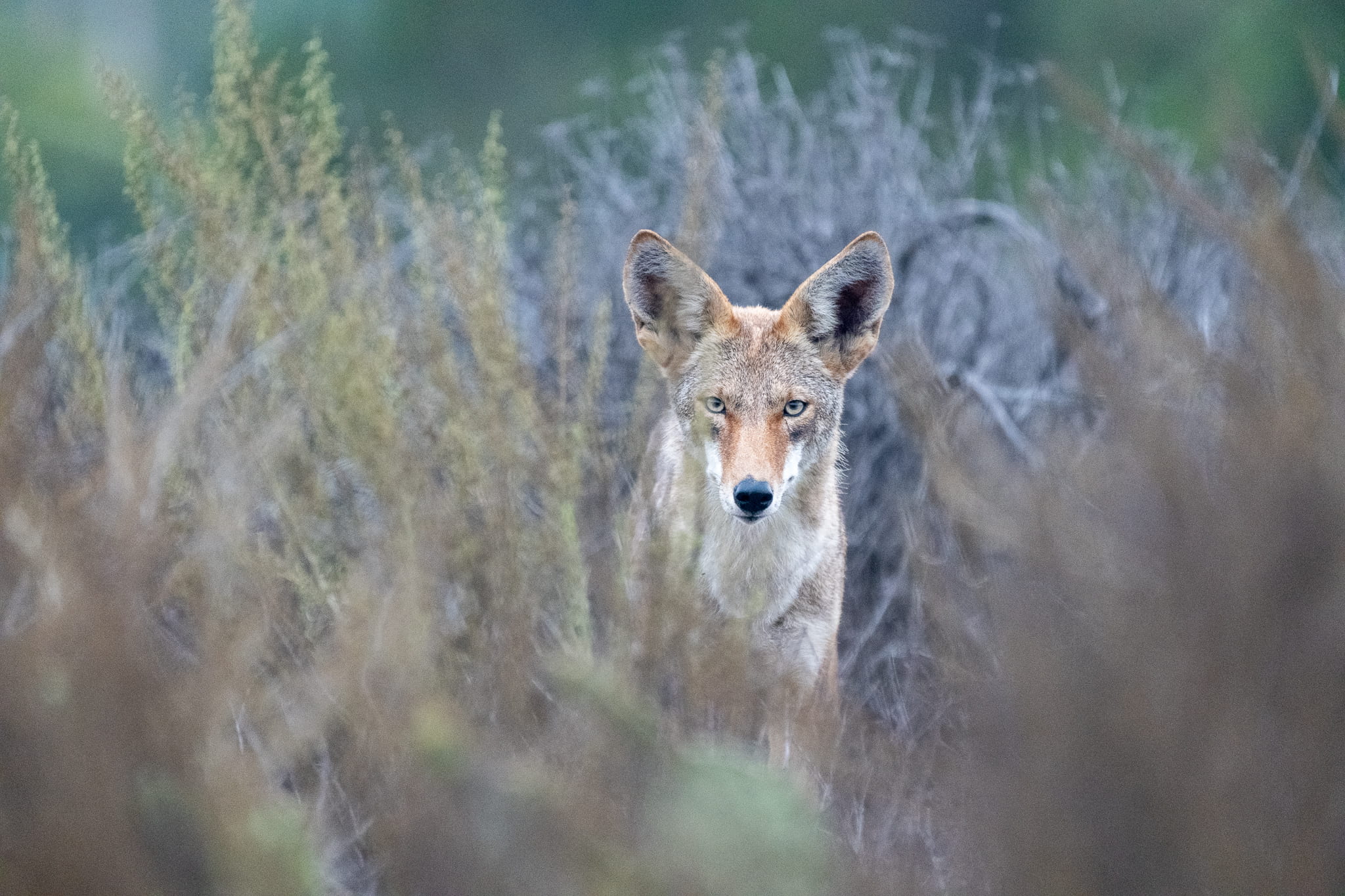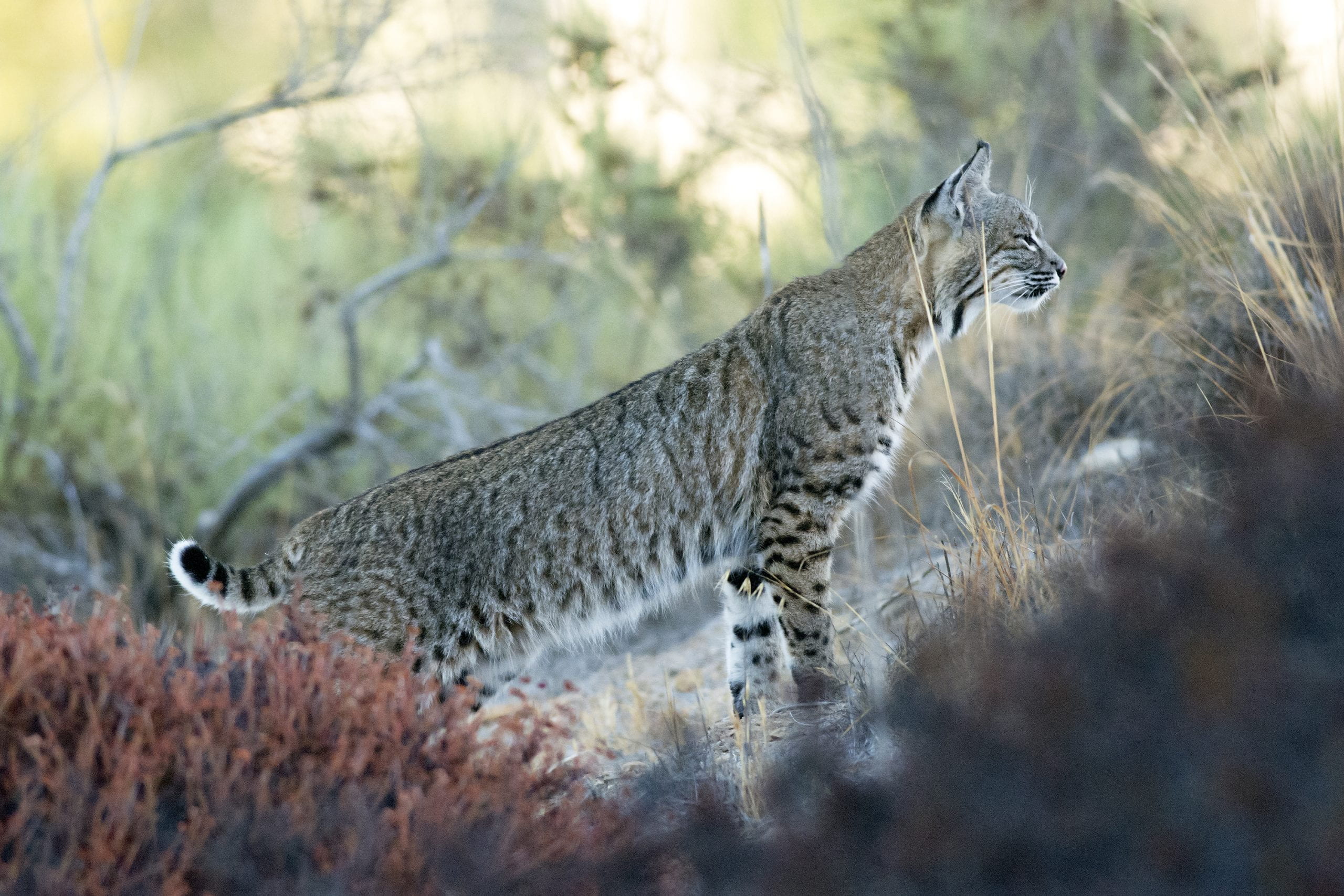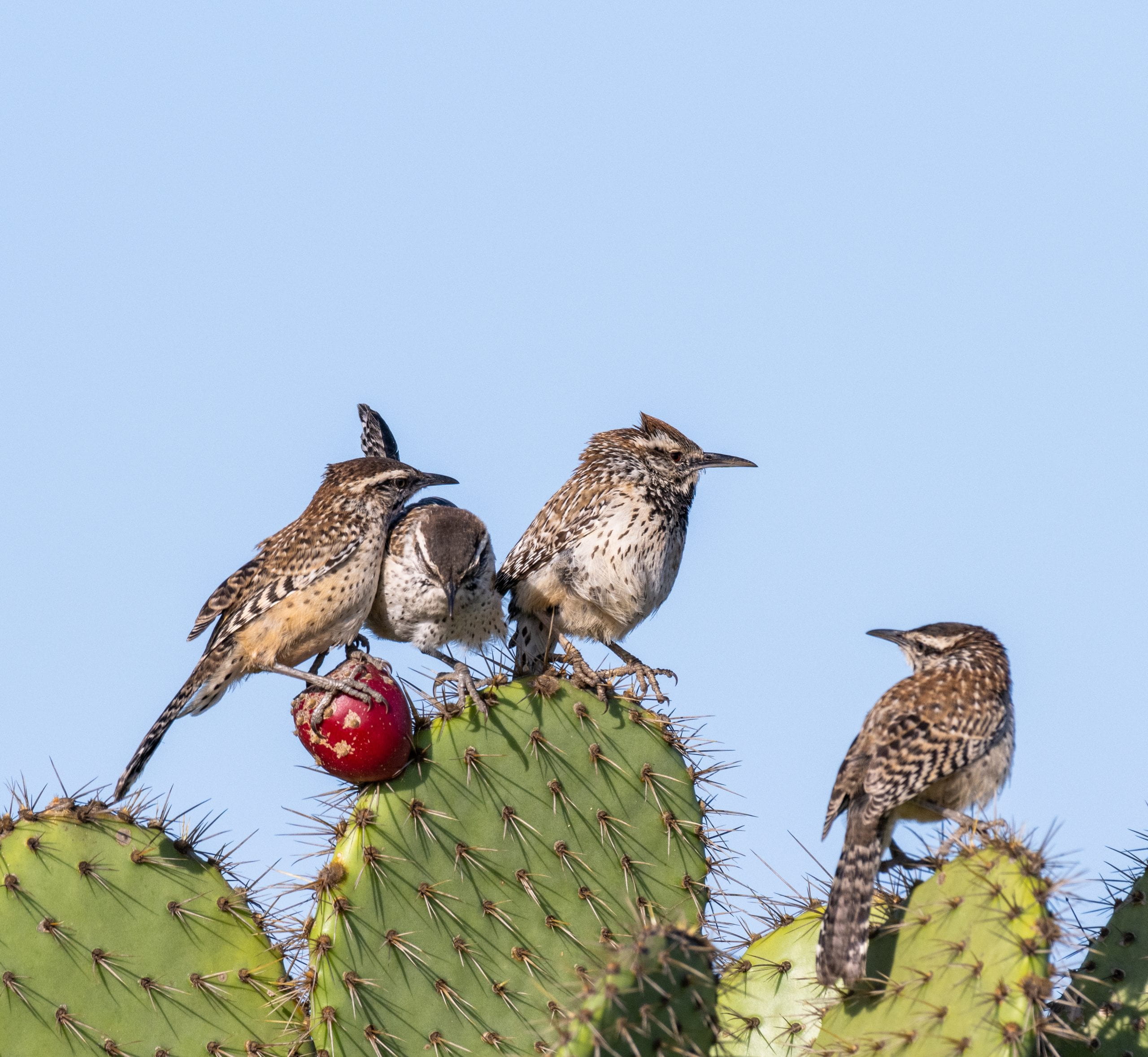Take a walk on the wild side
UCI Ecological Preserve champions biodiversity and community engagement in Irvine

At a 60-acre spot on the UC Irvine campus, the UCI Ecological Preserve takes visitors back to a time when Orange County’s coastal hills – not yet developed – were rich with sage scrubs and grasslands and teeming with bird and insect life.
The preserve is not only a sanctuary for diverse species but also a hub for education, research and community engagement, playing a crucial role in efforts to conserve local flora and fauna. The site features a series of hills, ridgetop vistas and a valley bottom, creating a range of microclimates that support a wide variety of life-forms. A short riparian drainage zone at the base of the terrain is home to large shrubs and trees.
These ecosystems offer students, faculty and the public an opportunity to experience a subset of those native to Orange County. The space lets residents learn about the local environment and how to help steward it to preserve biodiversity and natural resources.
The UCI Ecological Preserve was established as part of a larger conservation effort in Orange County in the mid-1990s to safeguard ecosystems in their entirety, including habitat linkages necessary for their long-term sustainability. This management plan is under the umbrella of the state’s Natural Community Conservation Planning program, which covers protected open space in central and coastal Orange County overseen by the Natural Communities Coalition.
This connection to other natural areas, combined with the mission of the university, positions the preserve as an ideal place for furthering our understanding of wild ecosystems, the effect of human activities on them, and how best to manage them for their sustainability and benefits to society.
Megan Lulow, the preserve manager and executive director of UCI Nature, says that the last two years of drenching rain have fostered optimal plant growth.
“The preserve is home to many species of our local sage scrub habitat, and most of the core species of shrubs are very green right now,” she says. “It’s been really good for perennial plants that have suffered from the previous drought. Shrubs and trees are growing a lot this year, in addition to wildflowers blooming this spring.”
Now is a great time for an intrepid hiker to visit. The UCI Ecological Preserve features three meandering trails accessible from six entry points. Lulow says visitors must follow these rules: Stay on trails; no bikes; keep dogs on 6-foot leashes and collect their waste; do not pick at plants or specimens; do not smoke; and leave no trash.
Along with plant life, the preserve is home to many types of lizards, frogs, snails and snakes. Mammal life is rich with mice and rabbits – to name a few – along with the occasional bobcat and coyote. A mule deer was once spotted too.
It’s also a great place for birdwatchers. The large variety of species spotted makes for a long list. And the elusive kites – the iconic birds of Orange County named for their ability to hover in the air while hunting – have been seen roosting and nesting in the protected area.
Volunteer opportunities at the preserve arise often, and Lulow suggests that those interested in learning more about them and getting on the volunteer list email ucinature@uci.edu.



